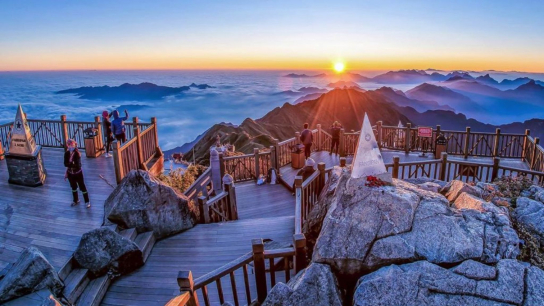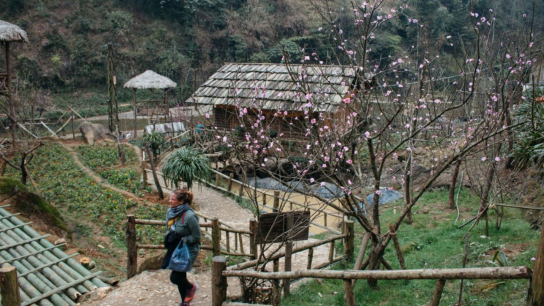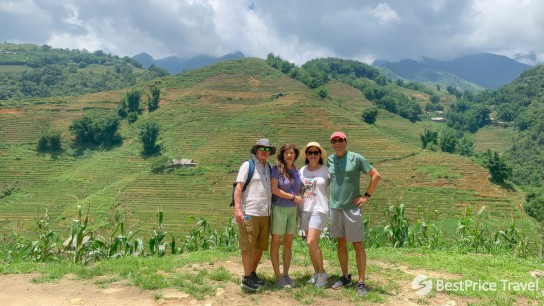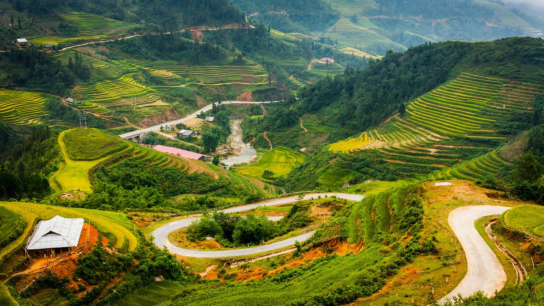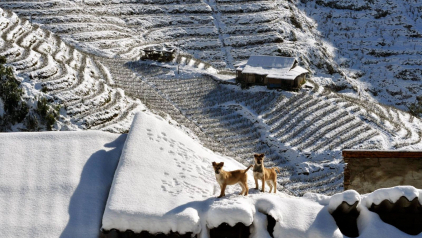The Ultimate Guide to the Weather in Fansipan
Fansipan Mountain, the tallest peak in Vietnam as well as the rooftop of the Indochina peninsula never stops attracting tourists to come to explore. Before the adventure to Fansipan, do not forget to search for information about Fansipan weather.
Fansipan is the highest mountain in Vietnam with a height of 3,147.3 meters, and stands tall in Sapa, Lao Cai Province. It is also the highest mountain in the Indochinese Peninsula so people call it "the Roof of Indochina".
There are 2 ways to reach Fansipan: trekking and using a cable car. Conquering Fansipan is always challenging but it still attracts a large number of tourists each year.
The timing of your visit greatly affects your experience - from clear panoramic views to misty, freezing conditions. The below information will give you general information about Fansipan weather, which helps you better plan your adventure to Fansipan.
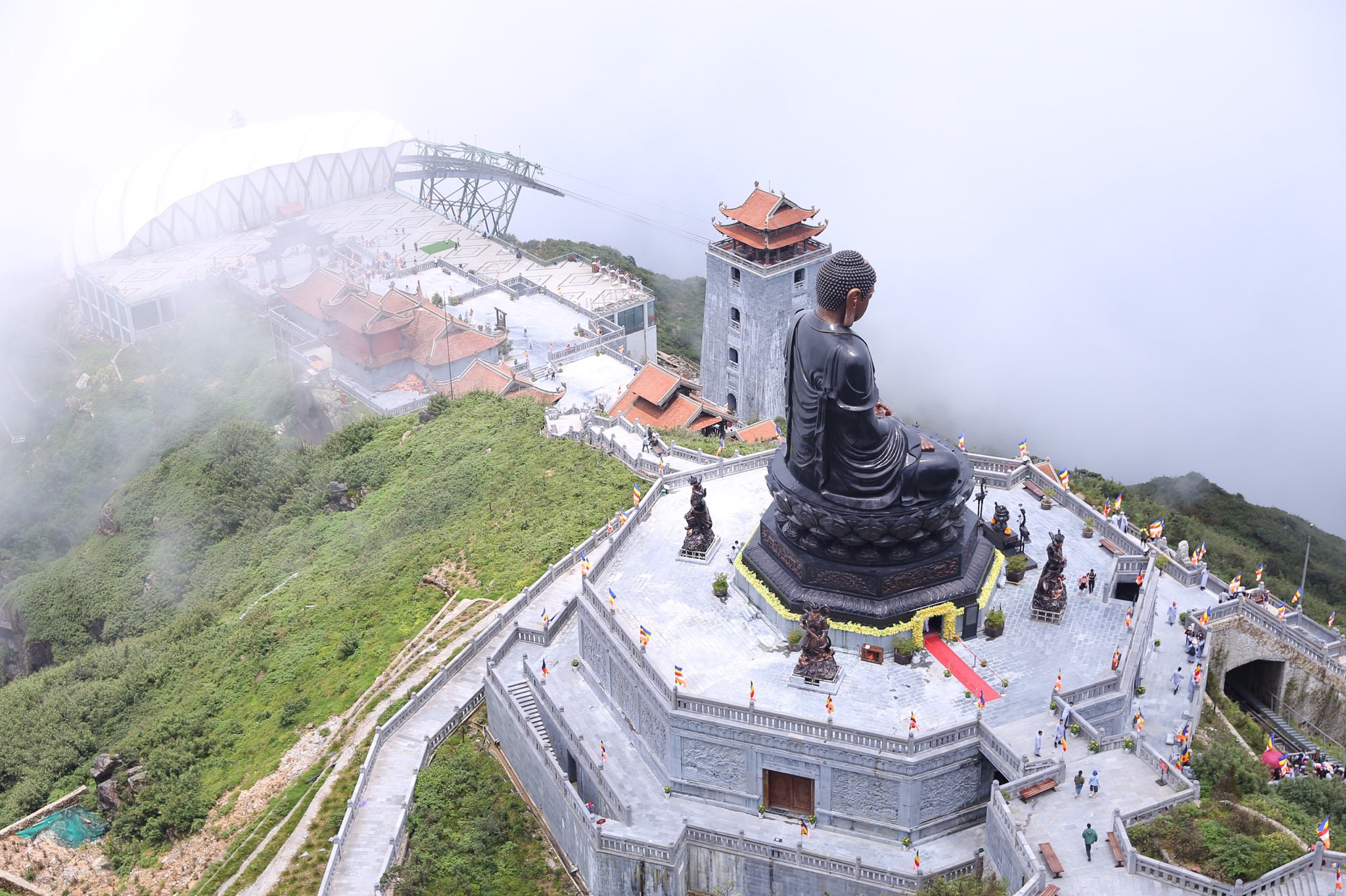
Buddha statue in Fansipan
The best time to visit Fansipan Mountain
The best time to visit Fansipan Mountain is from March to May and September to October, when the weather is dry, clear, and comfortable. These months offer ideal conditions for trekking, photography, and enjoying stunning panoramic views.
- March to May is springtime, and the rainy season has not come yet. The sky is clear with much more sunshine. Climbing this mountain at the end of March, if you are lucky, you will also be able to see the azaleas forest with blooming flowers which are as beautiful as in pictures.
- September to October is when the rain is over but the winter has not come. You will be able to eyewitness the panoramic terraced fields in the harvest season, in harmony with the green background of the Hoang Lien Son range and the deep blue sky.
Avoid visiting Fansipan from July to August, as heavy rain can cause muddy trails and landslides. For those seeking snow or frost, plan your trip between late December and February, but be ready for freezing temperatures and limited visibility.
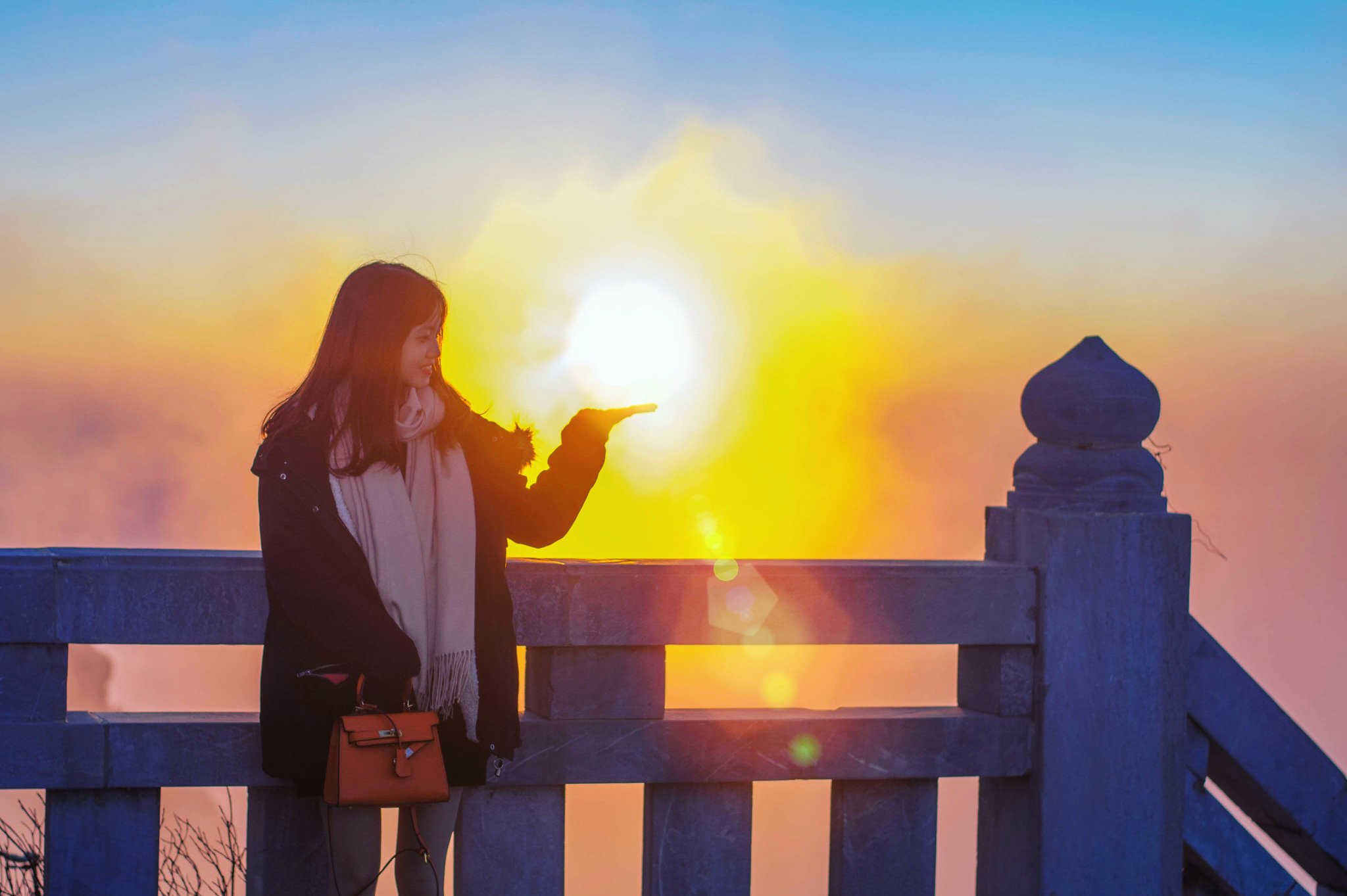
Conquering Fansipan in perfect weather condition
Fansipan Weather by Season
Fansipan weather is changing frequently and quickly season by season, month by month, day by day, or even within a day. It is said that you can experience 4 different seasons in Fansipan in one day. It is because of the strong influences of the terrain and altitude. The below information is about Fansipan by distinctive seasons.
November - February
- November - February
- Weather: 5-10°C in Sapa, below 0°C on the summit.
Tip: Dress warmly in layers and bring gloves, a hat, and a scarf. Check weather updates - snow is rare but possible!
This is the coolest time in Sapa when the temperature can drop to below 0°C. It is cold, cloudy, foggy without sunshine or blue sky. Taking a cable car is a good option if you still want to visit Fansipan & enjoy peace during this time.
March - May
- Weather: 15-20°C in Sapa, 8-15°C on the summit.
- Tip: Visit early in the morning for the clearest skies and pack a light jacket - it can get cool at higher altitudes.
It is the beginning of Spring when the temperature is becoming higher. It is still cold, but you can see spectacular views if you are lucky enough to have a sunny day.
June - August
- Weather: 20-28°C in Sapa, 12-18°C on the summit.
- Tip: Bring a raincoat and waterproof shoes, and plan activities early in the day before the rain starts.
It is summertime and the weather is hot and humid. You should avoid this time if you are not a big fan of rain.
September - October
- Weather: 15–20°C in Sapa, 8–12°C on the summit.
- Tip: Visit in October for the best visibility and crisp, clear mornings - ideal for trekking and photography.
It is the ripe rice season and the weather is stable. And you can experience sunny weather in the day time and cold at night, you can even experience 4 distinct seasons in a day. Visit Fansipan Mountain during this time, you will be able to take the best photos of the rice terraces turning from green to golden across the hills.
Fansipan Weather by Month
| Month | Weather Overview | Travel Notes |
| Jan – Feb | Cold, frosty, with a chance of snow | Magical winter scenery but harsh conditions |
| Mar – Apr | Flowers bloom, mild temperatures | Great for trekking and photography |
| May – Jun | Warm and mostly clear | Start of the rainy season |
| Jul – Aug | Wettest months with afternoon downpours | Expect heavy rain, slippery trails, and possible landslides |
| Sep – Oct | Dry, sunny, and clear skies | Best time to visit for stable weather and stunning views |
| Nov – Dec | Cool with occasional fog | Peaceful atmosphere and crisp mountain air |
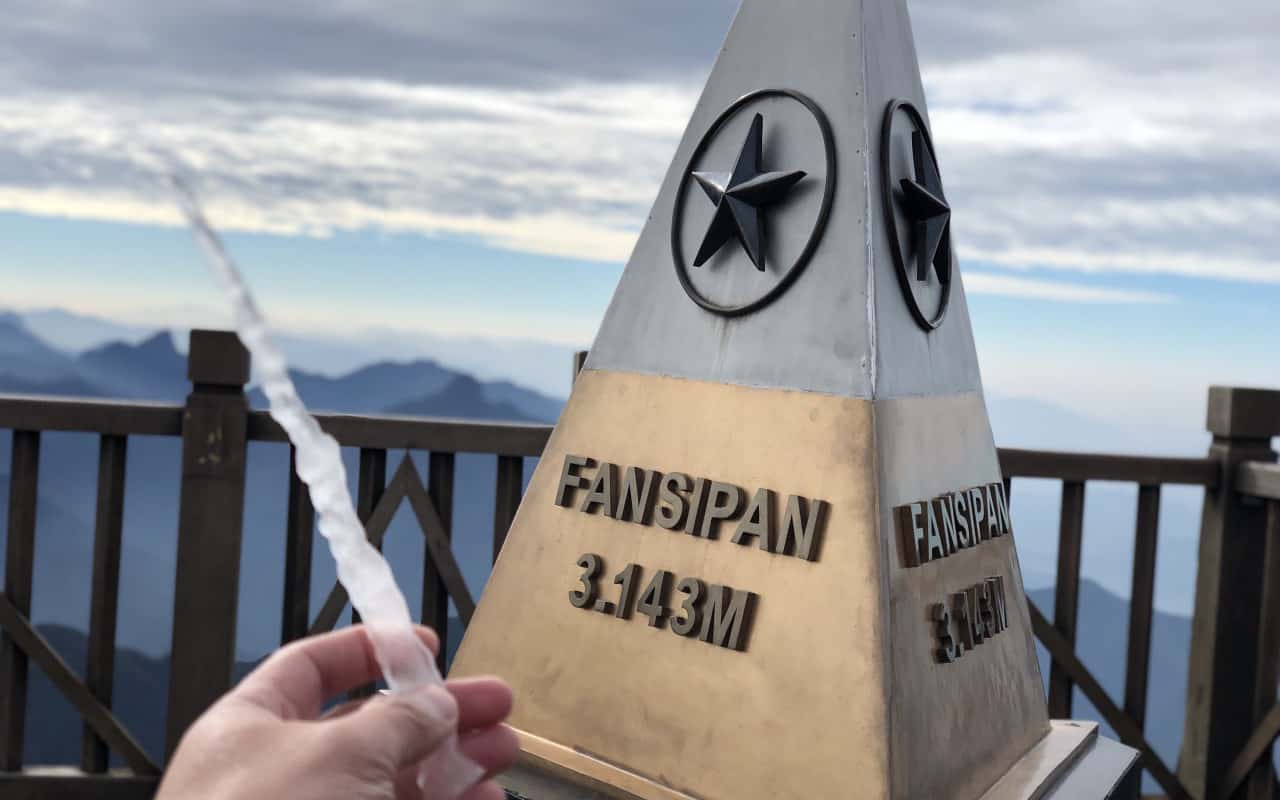
The winter at Fansipan peak

Dances in the sun in Fansipan

Taking the cable car to Fansipan
Check the weather before coming to Fansipan
7 Days Weather Forecast
18°C
17°C
17°C
17°C
17°C
17°C
18°C
It is highly recommended to check the weather in Fansipan before coming there. The weather is varied from time to time, place to place and the trek will become hard if you do not have perfect weather conditions during your trip. While trekking on a rainy day, the road becomes slippery and muddy and it can become a terrible trip. Even if it does not rain, but it is cloudy and you can not see the majestic, dreaming scenery of Sapa from above.
To have a great weather conditions in Fansipan, do some research before your trip. September and October are harvest times and the landscape is wonderful. Hope that you can be in Fansipan between that time.
How Fansipan Weather Affects Your Trip
Cable Car Experience
- The Fansipan cable car operates year-round, only pausing during extreme storms or heavy maintenance.
- On clear, sunny days, you’ll enjoy breathtaking panoramic views over Sapa town and the Hoàng Liên Sơn mountain range.
- On foggy or cloudy days, visibility drops - you may not see far, but the mist creates a mysterious, dreamlike atmosphere that many travelers find magical.
Hiking/Trekking
- The dry seasons (September-November and March-May) are ideal for trekking - trails are firm, visibility is good, and temperatures are comfortable (10-20°C).
- During the rainy months (June-August), trails can get muddy and slippery, and landslides sometimes occur, so it’s not recommended for beginners.
- In winter (December-February), hiking is possible but challenging - temperatures can drop below freezing, and frost or even snow may appear at higher altitudes, making it best suited for experienced trekkers.
Photography & Views
- Early mornings (7-9 AM) offer the best chance for clear skies and cloud-free summit views - perfect for golden light photos.
- Right after a rain shower, the clouds often settle below the peaks, creating a spectacular “sea of clouds” effect - one of the most iconic sights in Sapa.
- During winter, patient photographers may capture rare frost or snow scenes - dress warmly and bring protective gear for your camera, as it can be very cold and humid.
Things to prepare to conquer the Fansipan
- Fansipan Cable Car ticket
Instead of taking a 3-day trek, you can conquer the Fansipan Mount by booking a Sapa Fansipan Legend Cable Car Ticket and going on a fascinating journey in only 15 minutes.
- Food and drink
The number one thing to prepare for conquering Fansipan is food and drink. Bring something that is not heavy, but provide energy like cheese, bread, chocolate, boiled eggs, and necessary vitamin. Do not forget to bring water and fruits if you can
- Sleeping bags and tents
You may sleep in Mt. Fansipan so bring your sleeping bags and tents for overnight
- Clothes
Prepare soft and light clothes and some sweaters or a thick jacket because it can be cold at night.
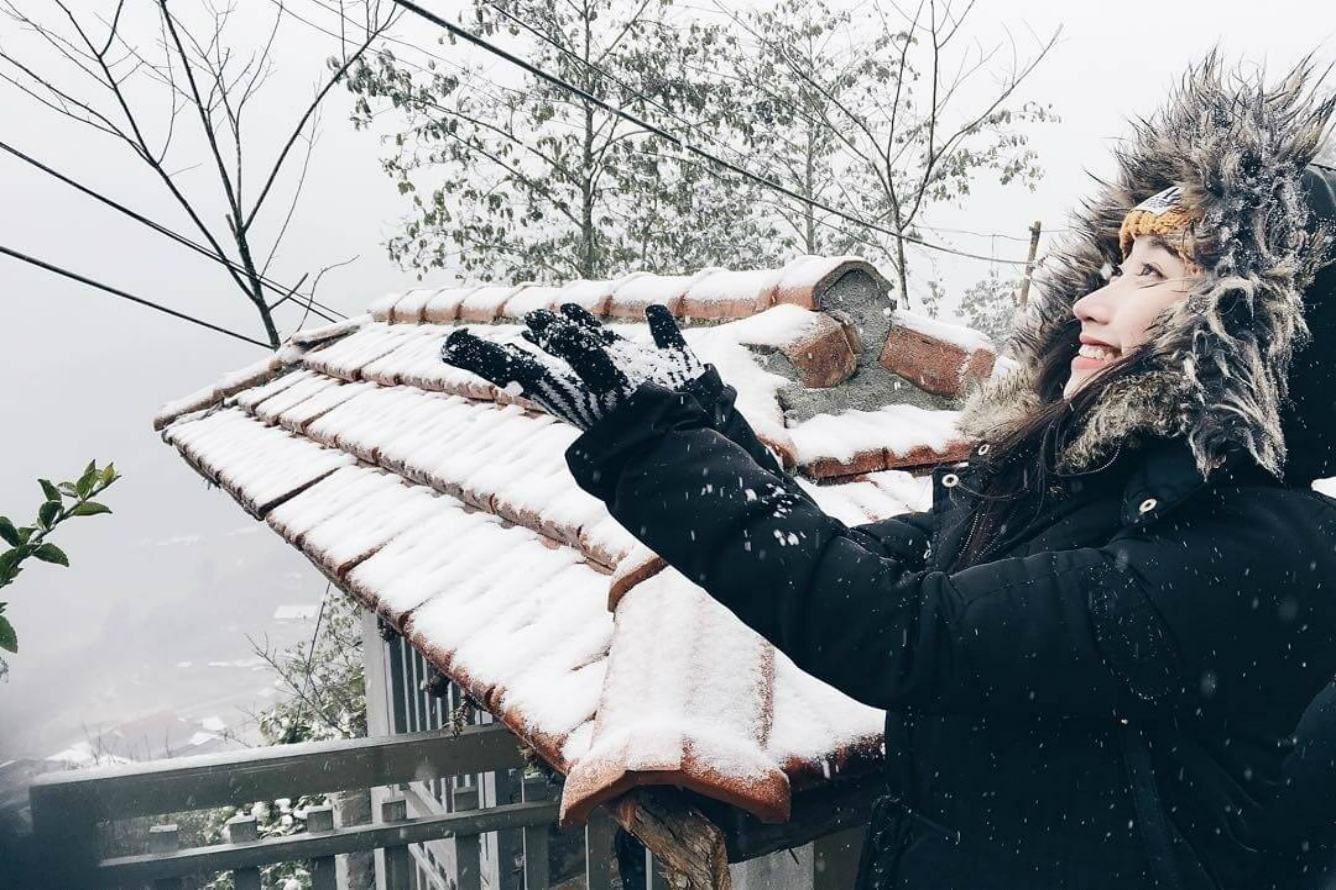
Fansipan in winter
- Shoes
Do not forget to bring waterproof shoes that are particularly designed for trekking.
- Other belongings
Flashlight, phone, camera, raincoat, rope, medicine, notebook, binoculars, snacks, backup charger, multifunction knife, ribbon, etc.
Local Tips for Travelers
Don’t trust Sapa weather forecasts 100%
- Mountain weather around Fansipan changes within minutes - it might be sunny in Sapa town but foggy at the summit.
- Treat forecasts as a rough guide, not a guarantee. Always prepare for all conditions: sun, rain, and chill.
Check visibility before buying cable car tickets
- Stop by the Fansipan Legend station and ask staff about summit visibility - they can often tell if it’s clear or covered in fog.
- If clouds are too thick, wait an hour or two; weather often clears up by mid-morning.
Arrive early (around 8 AM)
- Morning trips mean fewer crowds, smoother ticketing, and a better chance of clear skies before the fog rolls in.
- You’ll also have more time to explore the summit complex and temples without feeling rushed.
Bring snacks & water
- There are cafes and restaurants on the summit, but prices can be 2-3 times higher than in town.
- Packing light snacks and a reusable bottle saves money - and it’s eco-friendly too!
If hiking, hire a local guide
- Trails can be confusing, steep, and slippery, especially in wet or foggy weather.
- A local guide not only ensures safety but also shares stories about Hmong culture and the mountain’s legends - plus, it supports the local community directly.
FAQs About Fansipan Weather
Q1: Does Fansipan really get snow?
Yes, it does - but only on rare occasions! Snow or frost usually appears for a few days in January or February when temperatures drop below 0°C at the summit. If you’re lucky, you’ll witness a magical white blanket over the temples and stairs.
Q2: Is it safe to hike Fansipan in the rainy season?
Not really. From June to August, the trails become muddy and slippery, and landslide risks increase after heavy rain. It’s much safer (and cleaner!) to take the cable car during this period.
Q3: What’s the temperature difference between Sapa and the Fansipan summit?
The summit is usually 7-10°C colder than Sapa town. For example, if it’s 18°C in Sapa, expect around 8-10°C on top - and it can feel even colder with the wind!
Q4: Will the cable car close in bad weather?
Yes, for safety reasons, it may temporarily close during strong winds, thunderstorms, or heavy snow. Don’t worry though - operations usually resume quickly once conditions improve.
Q5: What’s the best time to avoid crowds?
Visit on weekdays during spring (Mar-May) or autumn (Sep-Nov), when the weather is great and crowds are thinner. Early mornings (before 9 AM) are also perfect for peaceful rides and clearer views.
Q6: Can children or seniors visit Fansipan?
Absolutely! The cable car makes it easy and safe for all ages. Just remember that the summit can be windy and below 10°C, so bring warm jackets, scarves, and gloves.
Fansipan offers a breathtaking experience in every season - from misty winter peaks to golden autumn valleys and vibrant spring blooms. No matter when you visit, the weather shapes the magic of your journey.
Plan ahead, pack right, and make the most of your adventure to the “Roof of Indochina.” Book your Fansipan tour today to experience its stunning beauty with ease and comfort!
You may also like: What to expect in Sun World Fansipan Legend?
Jenny Tran
Image sources: Internet

